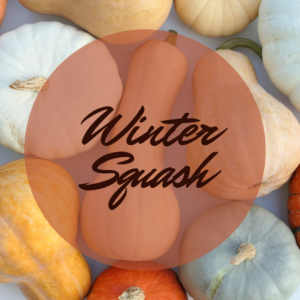Looking for some nutrient-dense foods to add to your dinner plate this fall? Even though they are available all year long, cool weather brings on a hardy crop of winter squash in Kentucky. Squashes come in a wide array of varieties, shapes, sizes, and colors. They are members of the vast Cucurbitaceae family of vines and include zucchini, patty pan, crookneck, and spaghetti squash, as well as the winter crop of watermelon, pumpkin, butternut, and cushaw.

Squash are full of fiber and antioxidants. Besides playing a role in cancer prevention, other health benefits may include improved eye health, reduced risk of depression, enhanced skin health, and improved digestive health. Consult USDA’s FoodData Central for the nutrients available in your favorite vegetables at https://fdc.nal.usda.gov/. But squash is a good source of calcium, iron, magnesium, vitamins A and B-6. For example, one cup of butternut squash served raw contains 63 calories, 1 gram of protein, and 3 grams of fiber, not to mention the high beta-carotene content.
To store winter squash, place them in a cool, dry place outside of the refrigerator. Most winter squash will keep best from two to four months, but in the right environment may last from eight to 12 months. So don’t be afraid to buy several at your local farmers’ market to store or freeze. Once peeled, cut and cooked, place in an airtight container and refrigerate for three to five days. Most winter squash is best if cooked first and then mashed or pureed. In an airtight container, it should be good for up to six months.
Sometimes, squash are hard to cut. Leave the skin on while baking, scoop out the seeds to discard, then use the flesh in a lot of different ways. Or put a few holes in the squash and microwave a few minutes for ease of paring before cubing or slicing. A few easy ways to include squash in your dinner plans include using acorn, cushaw, or red kuri squash to replace the filling for pumpkin pie; make a vegan chili using squash as one of the ingredients; blend butternut squash with milk, cinnamon, and dates to make a smoothie; use spaghetti squash as the noodles in your favorite pasta dish; and roast any type of squash for a great side dish. Try including more squash in your fall diet for a start on eating well.
Source: Sandra Bastin, Extension Food and Nutrition specialist
